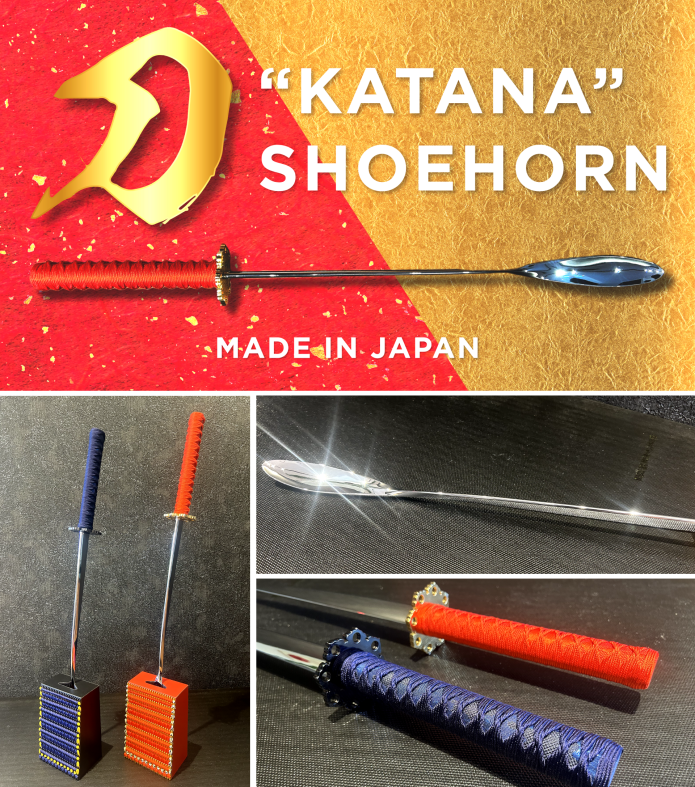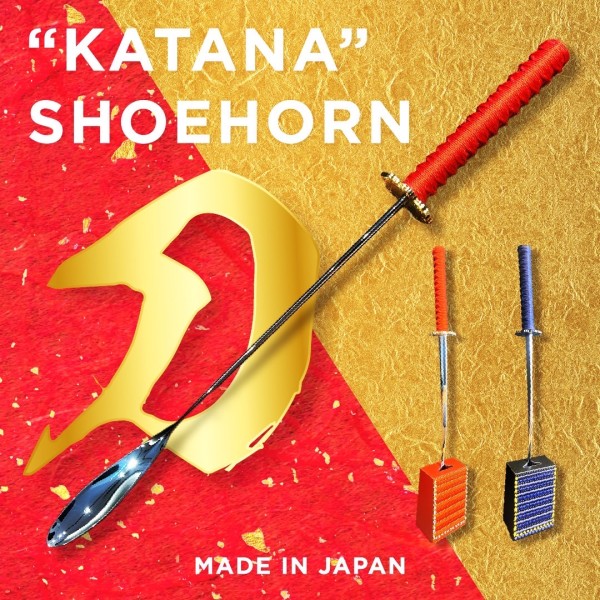
Shoe horn looks like a Japanese traditional sword “KATANA”. Japanese technique in your daily life.
Bring the beauty of Japanese traditional sword and armor modeling that Samurai felt in your daily life.
A high quality shoe horn that is made in a traditional Japanese technique.
This high quality shoe horn looks like a Japanese sword “KATANA”, using traditional armor manufacturing methods and techniques that have been handed down since the Edo period (AD 1600 ~ ). It can be used as the shoe horn when you put on your shoes, and also it can be displayed as the interior.
In ancient Japan, “KATANA” were used as a weapon of Samurai (an old Japanese warrior) during the war (戦:IKUSA). Armor was used not only as a protective armor, but also as a sign of the Samurai’s authority. And because of their beauty, these traditional armors remain highly popular both in Japan and abroad these days, even though the war (戦:IKUSA) is no longer happening in Japan.
This project was launched out of the desire to convey these beautiful traditional Japanese armors to the world and to make them fit in our daily lives. Enjoy the beauty of traditional Japanese objects and the deep attention to details.

Point 1: “Japanese tradition in your daily life” for tradition and history lovers
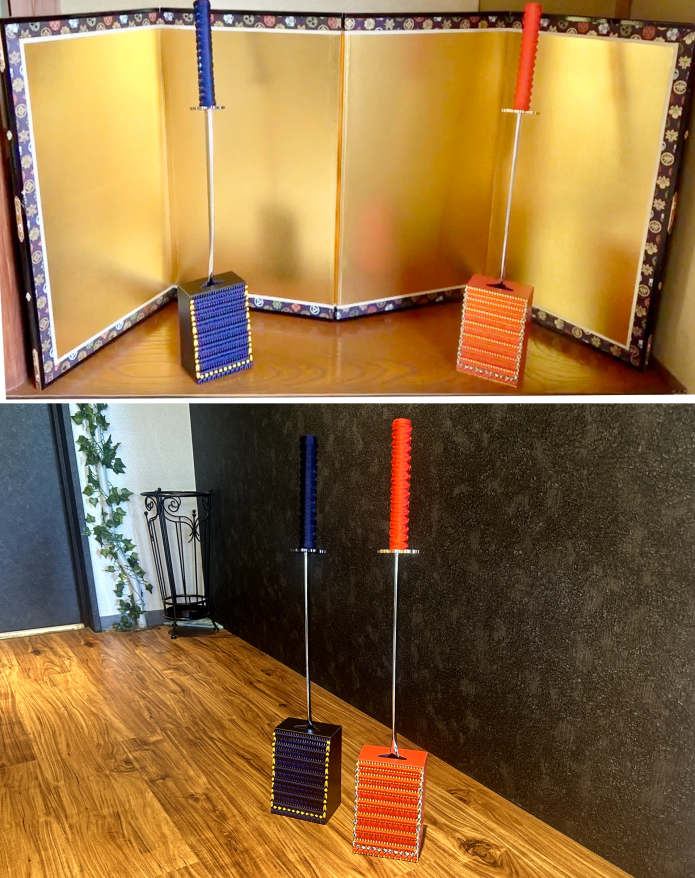
Okoshi Chu Mfg., Inc. has won many contests and has introduced the attraction of Japanese traditional armors to many customers. You can feel the Japanese tradition and enjoy the uniqueness of the shoehorn, decorated with armor manufacturing techniques in your daily life. Why don’t you use the shoe horn that conveys the attractions of Japanese tradition made by the best craftsmen in Japan?
Point 2: Usability and particularity as a shoehorn
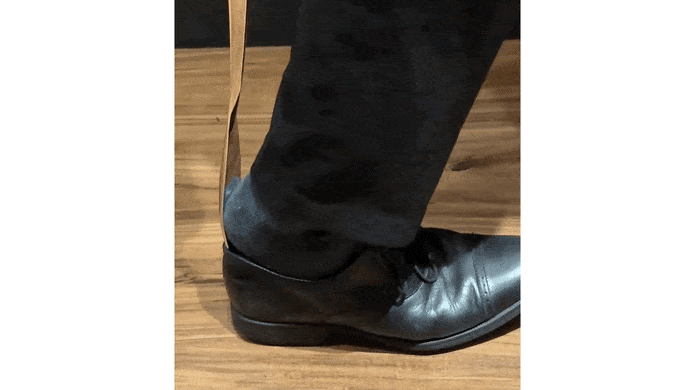
The shoe horn part is 70 cm long, allowing you to put on shoes without bending down. And the weight is as heavy as real “KATANA”, so that you can feel as if you are holding “KATANA”.
Point 3: All handwork processes in making one product.

More than 100 craftsmen are involved in the process of making one piece of the armor, and there are more than 5000 processes in making the whole armor. As well as making this “KATANA” Shoehorn, it is all handwork processes.
Point 4: The beautiful shape designed by the latest 3D modeling technology.
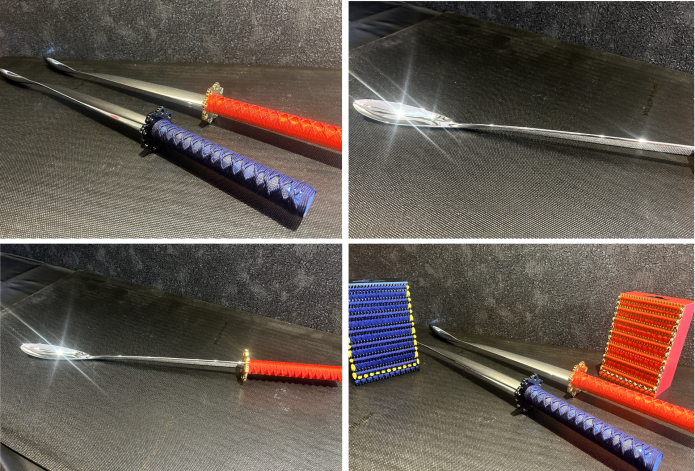
The shoe horn part has been created by the 3D modeling technology to have a three-dimensional and curvaceous shape that is typical of “KATANA”. Because of its beauty, it can be enjoyed just by displaying it as an ornament in your home.
Point 5: The beautiful storage box that has been well-designed.
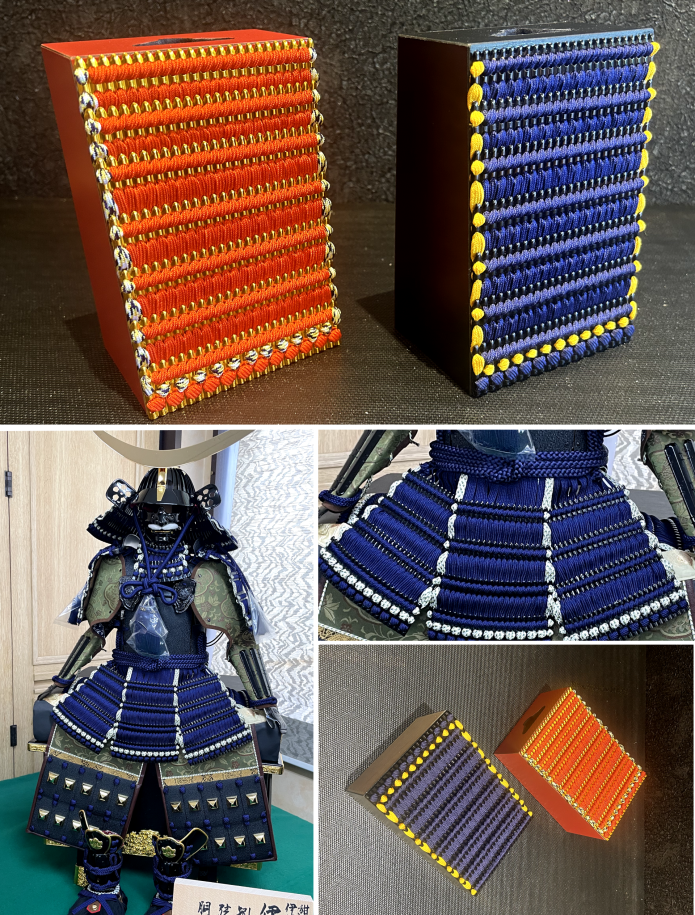
Not only the shoehorn, but also its storage box is the crystallization of Japanese traditional technology. The armor technique that knits together and together, which is called “ODOSHI” is the technique that can only be performed by skilled craftsmen. This part is the most important part of the armor manufacturing, and the value of the product depends on how beautifully this process is finished.

”KATANA” Shoehorn
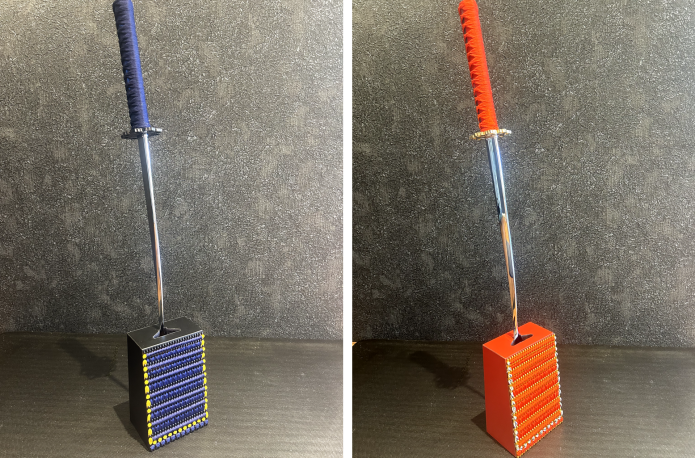
Gross weight: approx. 1.7 kg
Case size: W16 (cm) x D77 (cm) x H18 (cm)
Warranty period: 1 year
Paulownia box, Chuho Fukusa, warranty card, and instruction manual
Traditional interior “KABUTO”
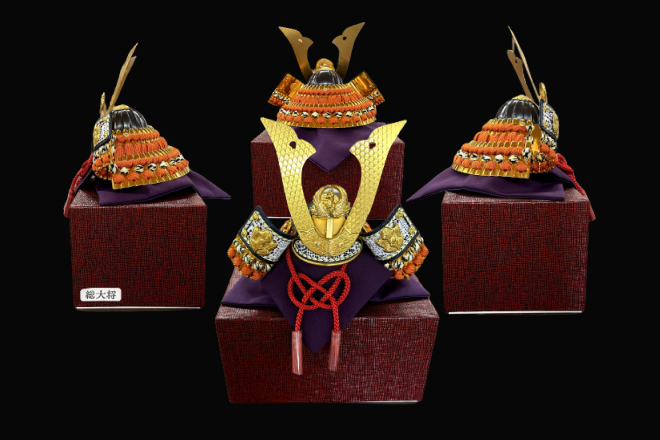
Case size: null: W18 (cm) x D12 (cm) x H24 (cm)
Warranty period: 1 year
Paulownia box, Chuho Fukusa, warranty card, and instruction manual

This project is promoted by New Backer, a community of over 400,000+ members that has raised creators over $100MM to date.

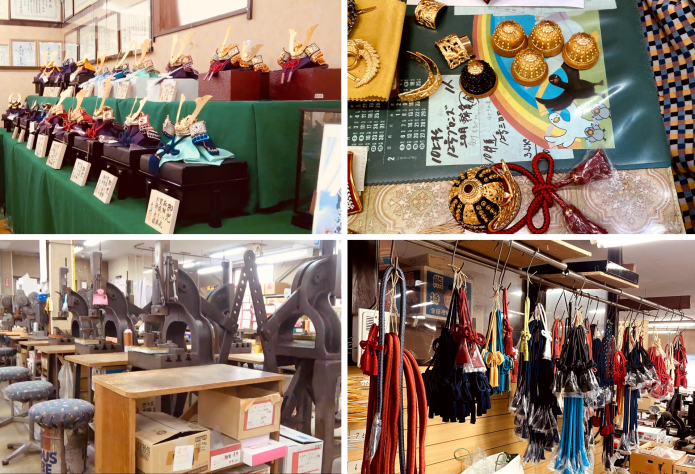
Chu Okoshi, the grandmother of the current president, founded Okoshi Chu Mfg., Inc. . in 1947 after World War II. What is important to Okoshi Chu Mfg., Inc. in making armor is that they do not cut corners in materials and techniques. Ninety percent of the processes are carried out by their own hand, with the utmost care.
More than 100 craftsmen are involved in the process of making one piece of the armor, and totally there are more than 5000 processes in making the whole armor.
“I feel the dynamism of craftsmanship in the gradual completion of the armor,” says the President Ohkoshi. However, he also feels that his company is facing difficulties in its business. The demand for armor has been declining steadily due to the decline of the birth rate, and traditional culture in Japan.
While feeling regretful that the culture of displaying dolls is not being inherited, we continue to ask ourselves how we can preserve the beauty and technology of armor. Tadayasu has so far developed various products such as bottle armor, bottle caps, bracelets, and so on.
In particular, the bottle armor became the top selling product when it was re-sized to fit wine for overseas markets, and began to display in airports as a souvenir for foreigners.
In this vast world, there should be demands for Japanese traditional armor not only in Japan but elsewhere. No matter what form it takes, we feel the sense of purpose to inherit the tradition.
We hope this “KATANA” Shoehorn will convey our soul of Japanese tradition to all over the world.


